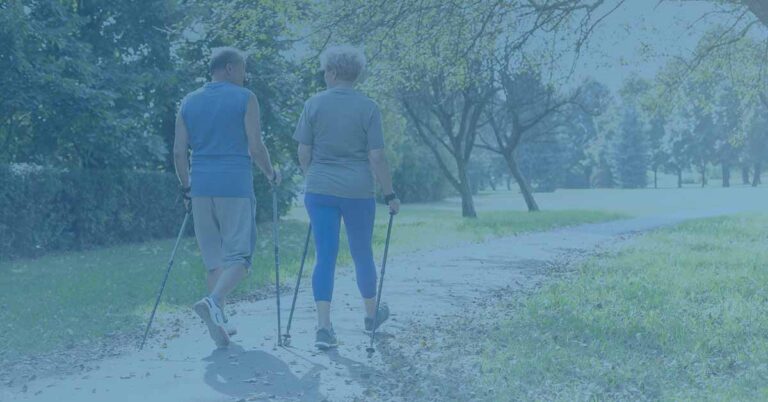Senior Fitness Test: Take the Test To See How Fit You Are
As we age, maintaining our physical fitness becomes increasingly important for living a healthy and fulfilling life. A key tool to determine your current fitness level is the Senior Fitness Test – designed specifically for adults aged 60 and over.
This comprehensive assessment measures various components of functional fitness such as strength, endurance, flexibility, agility, and balance. Not only does this provide vital information about your overall health but it also helps in creating a tailored exercise program to meet your specific needs.
The Importance of Fitness for Seniors
Regular physical activity is important for seniors as it has numerous physical, mental, and emotional benefits such as improving cardiovascular health, reducing the risk of chronic diseases like diabetes and hypertension, promoting bone density and muscle strength, and enhancing mood and cognitive function while reducing stress levels.
Benefits of Regular Physical Activity
Engaging in regular physical activity offers a myriad of benefits for seniors, making it an essential component of a healthy and fulfilling lifestyle.
One critical advantage of frequent physical exercise is enhanced cognitive function. Research has shown that active seniors experience better memory, focus, and problem-solving skills than their sedentary counterparts.
Staying fit can help reduce the risk of vascular dementia – one of the most common forms of cognitive decline among older adults. Moreover, an active lifestyle bolsters motor skills by improving strength, flexibility, posture, balance, and coordination.
In addition to these health-related rewards, regular exercise plays a crucial role in promoting emotional wellness for seniors. Physical activity stimulates mood-enhancing endorphins which combat feelings of stress or depression often experienced during later stages of life.
Risks of a Sedentary Lifestyle
Leading a sedentary lifestyle has significant and potentially serious consequences, especially for seniors. Prolonged inactivity can lead to an increased risk of developing chronic health conditions such as cardiovascular disease, obesity, Type 2 diabetes, osteoporosis, and even certain cancers.
For instance, consider the case of an older adult who spends most of their day sitting – watching television, or working on a computer. Over time, this lack of physical activity weakens muscles and joints while negatively impacting balance and flexibility.
The reduced strength could make it challenging for them to complete daily tasks like climbing stairs or carrying groceries without assistance. Furthermore, poor cardiovascular health caused by inactivity can diminish endurance levels necessary for more extended periods of exertion or recreational activities with loved ones.
What Is the Senior Fitness Test?
The Senior Fitness Test is a comprehensive assessment that evaluates the functional fitness of aging adults, measuring diverse components such as strength, endurance, flexibility, agility, and balance.
Overview of the Test and Its Components
The Senior Fitness Test is an effective and widely-used method for evaluating the overall fitness levels of older adults by assessing various aspects crucial to their functionality in daily life.
This evaluation consists of six functional tests that offer a comprehensive analysis, encompassing areas such as arm and leg strength, endurance, balance, agility, and flexibility.
For example, the chair stand test measures lower body strength through timed repetitions of standing up from a seated position without using one’s arms. Another component, the back scratch test, assesses upper body flexibility by determining how close an individual can get their hands together behind their back.
How It Assess Overall Fitness
The Senior Fitness Test is designed to assess different aspects of an older adult’s fitness levels, providing an overall evaluation of their functional capacity. The test consists of various components that mimic daily activities, such as standing up from a chair and walking, to measure strength, flexibility, and balance.
How To Take the Senior Fitness Test
To take the Senior Fitness Test, first find a qualified tester who can administer the test properly; prepare for the test by wearing comfortable clothing and bringing any necessary equipment; follow instructions carefully for each component of the test; and remember to utilize tips for success such as pacing yourself during testing.
Finding a Qualified Tester
To ensure accurate results, it is crucial to find a qualified tester who can administer the Senior Fitness Test. This person should be trained and certified by an organization such as the American Council on Exercise or the National Strength and Conditioning Association.
They will have expertise in fitness testing and evaluation, as well as knowledge of safe exercise practices for older adults.
Additionally, consider seeking out recommendations from healthcare professionals or senior centers in your local community. They may be able to refer you to a trusted tester who has experience working with older adults.
Preparation Before the Test
Before taking the Senior Fitness Test, it is essential to prepare in advance to ensure an accurate assessment of functional fitness. The first step is finding a qualified tester who can conduct the test and provide guidance throughout each component.
Familiarizing oneself with the instructions, procedures, and requirements for each test component ensures optimal performance during the assessments. Additionally, staying hydrated by drinking plenty of water before testing prevents dehydration during physical activity.
Instructions for Each Test Component
During the Senior Fitness Test, you will be evaluated on six different components of functional fitness. These components include arm and leg strength, endurance, balance, agility, and flexibility.
For arm and leg strength, you will be asked to perform a series of exercises that involve lifting weights or resistance bands.
The balance test requires you to stand on one foot for 10 seconds with eyes closed while the agility section tests how quickly you can get up from a chair and walk several steps before returning back to sit in the chair.
Lastly, flexibility is assessed through exercises aimed at measuring the range of motion in various joints. These tests are designed to be easy to understand yet effective in assessing your overall fitness level and ability to perform everyday activities like walking or getting out of bed safely.
The Senior Fitness Test Is a Useful Tool for Monitoring Your Health and Fitness as You Age
In conclusion, taking the Senior Fitness Test is an excellent way to monitor your overall health and fitness as you age. With its focus on functional fitness components like strength, endurance, flexibility, agility, and balance, this test can provide valuable insights into your physical abilities.





